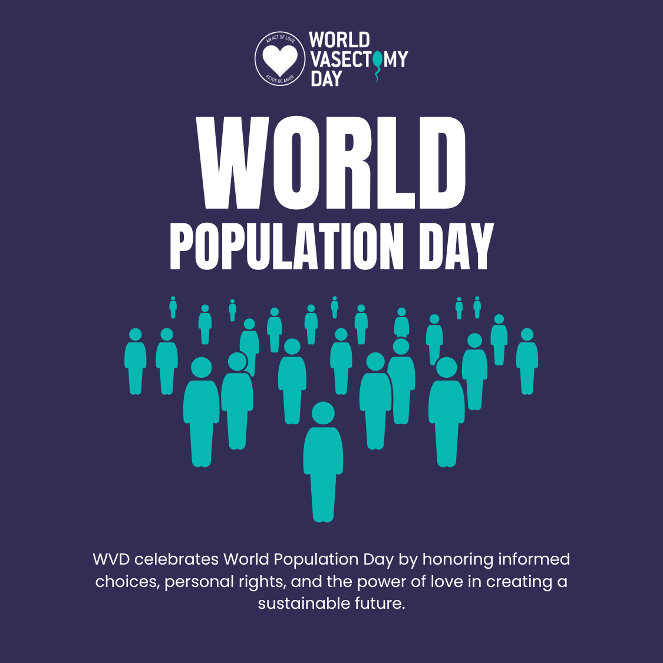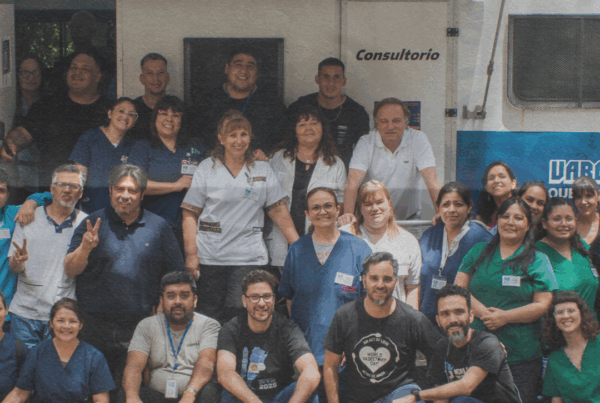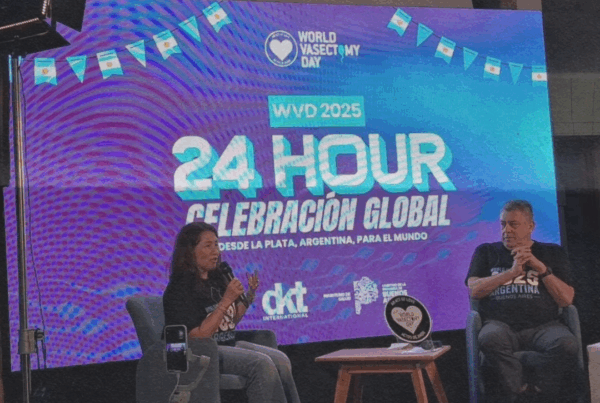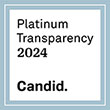Dear Friends,
This month, WVD celebrates World Population Day on July 11th. When the day was established by the then-Governing Council of the United Nations Development Program in 1989, and then memorialized on 11 July 1990 by more than 90 countries, the driving concern was the impact of overpopulation on the future of the planet.
In 2013, our inaugural year, WVD focused on humanity’s increasingly destructive impact on life on earth. Our day-long celebration was part of Australia’s Festival of Ideas and our film, THE VASECTOMIST, premiered at the Adelaide International Film Festival. We organized an 8-hour live stream that was repeated twice while performing 25 vasectomies in front of an audience at the Royal Institute of Science. Renowned scientist and author of The Population Bomb, Professor Paul Ehrlich was our keynote speaker and our slogan that year was “Put your Balls on the Line for Mother Earth!”

We quickly realized that although there are new generations of environmentally concerned men and women, almost all those who choose a vasectomy do so to ensure a better life for themselves, their children and their partners. WVD embraced this choice as an “Act of Love”, which has been our motto ever since.
In the 35 years since World Population Day was founded, and 13 years since WVD launched, conversations around population have taken an unexpected twist. While the overall global population has increased from 5.3 billion in 1990 to 8.25 billion today, with a projection of 10 billion by 2050 and 11 billion by 2100, birth rates have plummeted in many countries to below replacement rate (2.1).
In Italy, Japan, and Argentina families are averaging around 1.4 children; in China the rate is 1 child per family and even in sub-Saharan Africa numbers have fallen from 6 and 7 down to 3 and 4. In recent years, vasectomy doctors began to report on a different phenomena – increasing numbers of men seeking vasectomy who are choosing to have no children at all. Overall, birth rates are plummeting.
For the most part, this is a decision not so much grounded in love for the planet, as much as individuals’ anxiety about their future on it. It is a reflection of an ever expanding disparity in wealth such that even as access to opportunities and health care has increased, along with longevity, young people are uncertain about the future. Recent articles in the New York Times have posited that if this trend were to continue, eventually humanity will disappear.
We believe it’s premature to assume that choices about family size will remain this way forever, but the trend certainly raises important questions. What challenges will countries face as numbers diminish? How will we care for an aging population with a diminishing tax base? What is the optimal carrying capacity for maintaining quality life on this planet, including biodiversity, and what role will new technology play as we go forward?
We don’t have the answers, but if a higher birth rate is what you want, improving the quality of life afforded to young people – including quality health care, better education, kinder and more compassionate leadership, and higher paid jobs – will make giving birth a lot more appealing.
For us, the decision to have children, how many children, or no children at all, is a personal decision – and a basic human right. For what it’s worth, we were both born in the 50’s and the population on the planet then had not reached 3 billion. If we go down to that number again, over a long period of time with intention, preparation and equal opportunity for all humanity, it might actually not be so bad, and as Dr. Doug Stein, WVD’s co-founder told us, ‘If nothing else, at least the elephants will be grateful’.
Dedra Smith and Jonathan Stack
dsmith@wvd.org
jonathan@wvd.org








